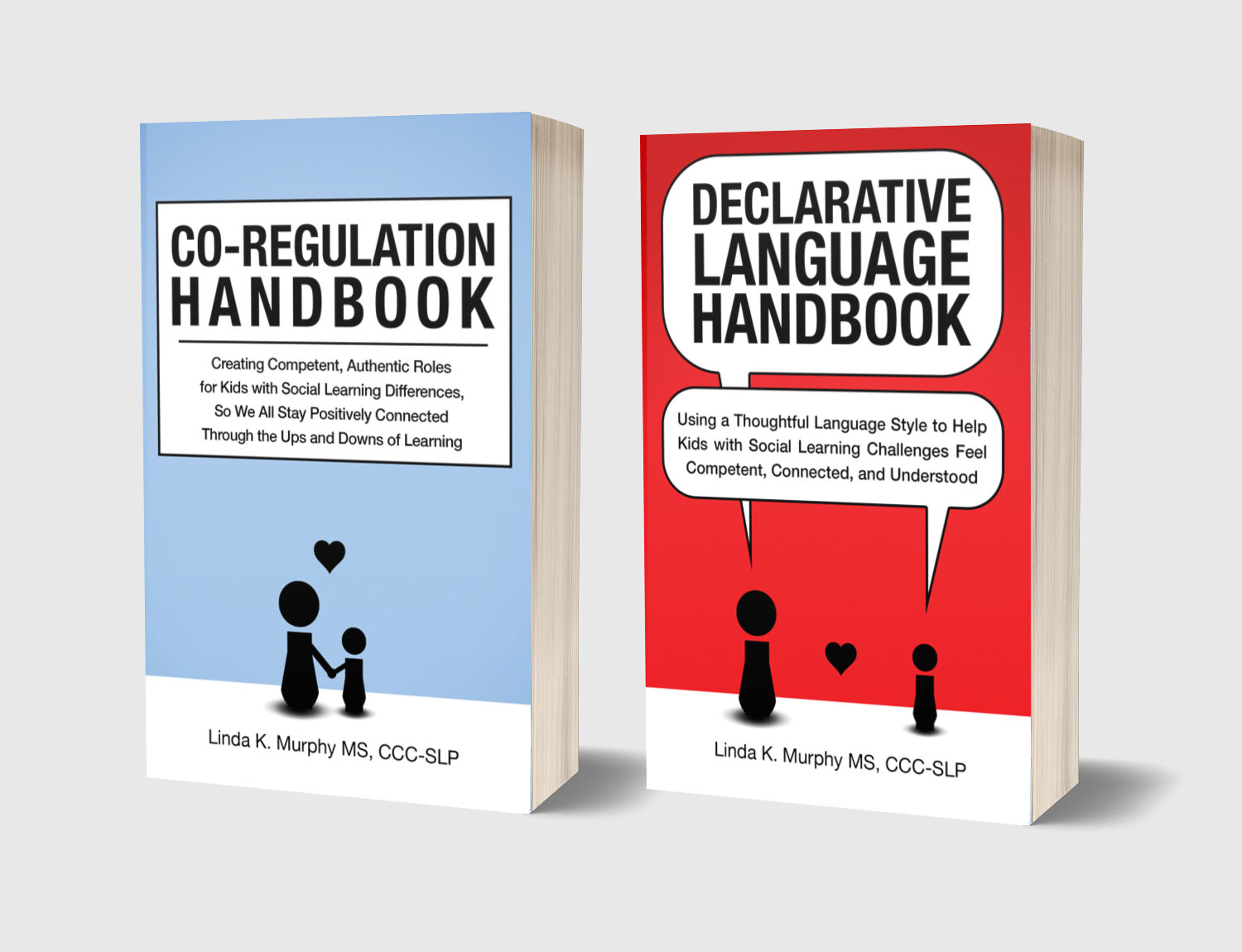Co-Regulation & the Development of Dynamic Communication
I finished and uploaded my presentation for the ASHA Convention’s Virtual Library, titled Co-Regulation: Creating Competence, Balance and Positive Connection Through the Ups and Downs of Learning, and am now free to think about other things. But, before I move on, I wanted to share a snapshot of the 1-hour oral seminar with you!
When helping individuals with social learning differences feel competent, connected and understood, declarative language along with a deep understanding of co-regulation, are the most important tools in my toolbox. I use these concepts together constantly. Each makes the other better and they really guide all that I do.
The way that I like to think about it is:
Declarative Language is a way of speaking, and Co-Regulation is a way of being. They are inseparable partners that make each other better.
In my presentation, I share how these two concepts come together for me, and how we can use them to help individuals stay connected, and learn, through all of our ups and downs.
In RDI, we consider researcher Dr. Alan Fogel’s definition of co-regulation, found in his book Developing Through Relationships. This definition is important for me as a speech language pathologist because it focuses specifically on communication. Through this lens, and in my own words, co-regulation means:
We are in sync moment-to-moment with another person, or in other words, regulating to another person moment-to-moment, or co-regulating!
We are present to each other in the moment.
We let go of any agenda so that we may respond to each other uniquely within each moment in time.
No one is controlling the other person, i.e., telling them what to say or what to do.
I know this definition may be different from what most people first think about - i.e., co-regulation in terms of the nervous system, and how a caregiver supports a child to regulate using co-regulation. But, I am focusing on co-regulation through this lens because it matters A LOT as we guide the development of dynamic communication in our learners.
Co-Regulation Leads to Dynamic Communication
Ever since I learned this definition of co-regulation, I have been on the lookout for it! I remember one day when the boys were young, and I saw them engage in this dynamic communication, or co-regulation, for the first time over an extended period of time. I was so excited!
Desmond was in his crib, Freddie was on the outside, and they were playing a game where they turned the lights on and off. So simple, but so rich! Fortunately, I was able to capture it on video.
This video still makes me laugh anytime I watch it! But, let me break down what I see in terms of co-regulation and dynamic communication, and share why this clip illustrates these concepts so well.
Freddie and Desmond are:
Responding to each other moment to moment. They truly wait it out for each person to take their turn in the interaction independently (well, for three quarters of it anyway, until Freddie gets a little excited with the light switch!).
NOT controlling the other person. Each boy gives space for the other to take their turn in the exchange, authentically.
Spontaneously and uniquely communicating using both verbal and nonverbal communication. They laugh, share affect and positive emotion, Desmond shrieks with joy, Freddie talks a little, and they continuously visually reference each other.
As a result,
Balance and true reciprocity are established.
and
Emotional connection between them develops!
In my talk, I go on to explain why establishing a foundation of true co-regulation between communication partners is so important when teaching, break down how to do it, and then illustrate how it all unfolds through more video examples!
If you are an SLP, or know one who will be visiting the ASHA Virtual Library, please spread the word to stop by my session! The presentation will be available from November 10th through November 28th.
Have a great week!
If you like my Sunday Snippets of Support, you can receive them directly to your inbox here.






